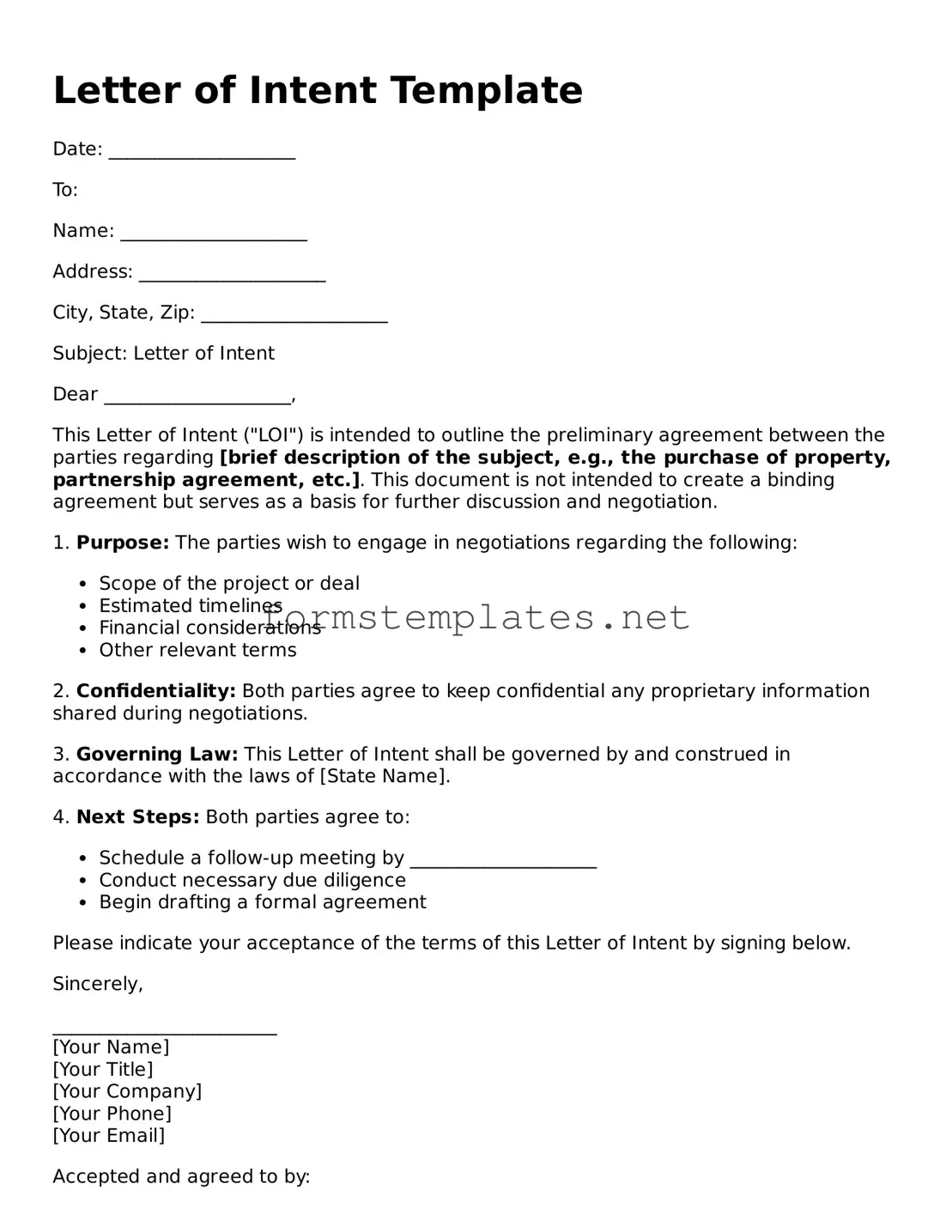Letter of Intent Template
Date: ____________________
To:
Name: ____________________
Address: ____________________
City, State, Zip: ____________________
Subject: Letter of Intent
Dear ____________________,
This Letter of Intent ("LOI") is intended to outline the preliminary agreement between the parties regarding [brief description of the subject, e.g., the purchase of property, partnership agreement, etc.]. This document is not intended to create a binding agreement but serves as a basis for further discussion and negotiation.
1. Purpose: The parties wish to engage in negotiations regarding the following:
- Scope of the project or deal
- Estimated timelines
- Financial considerations
- Other relevant terms
2. Confidentiality: Both parties agree to keep confidential any proprietary information shared during negotiations.
3. Governing Law: This Letter of Intent shall be governed by and construed in accordance with the laws of [State Name].
4. Next Steps: Both parties agree to:
- Schedule a follow-up meeting by ____________________
- Conduct necessary due diligence
- Begin drafting a formal agreement
Please indicate your acceptance of the terms of this Letter of Intent by signing below.
Sincerely,
________________________
[Your Name]
[Your Title]
[Your Company]
[Your Phone]
[Your Email]
Accepted and agreed to by:
________________________
[Recipient's Name]
[Recipient's Title]
[Recipient's Company]
Date: ____________________
